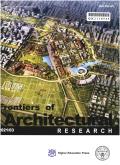Exploring the correlation between spatial heterogeneity of urban tourism and the degree of crowd gathering: Take the main area of Wuhan, China as an example
IF 3.6
1区 艺术学
0 ARCHITECTURE
引用次数: 0
Abstract
Urban tourism space is the primary area where tourism activities occur and a key driver of regional tourism space evolution. To explore the correlation between population aggregation and urban tourism spatial heterogeneity in the big data era, this study focuses on Wuhan's main urban area in 2023. Using the Geographically Weighted Regression model, it analyzes the factors influencing tourism spatial heterogeneity. Additionally, Baidu Heat map data is employed to identify crowd aggregation levels during holidays, revealing the distribution patterns of urban tourism space. The results indicate that (1) factors derived from the GWR model significantly influence the number of tourism spaces in Wuhan, with evident spatial differences; (2) based on the spatial matching of heterogeneity factors and crowd aggregation levels, urban tourism space can be categorized into six types, including five core tourism spaces and other scattered spaces. This research highlights the spatial heterogeneity of urban tourism in Wuhan and provides a scientific basis for the transformation and quality improvement of urban tourism space by exploring the impact of population activity density.
城市旅游空间异质性与人群集聚程度的相关性研究——以武汉市主城区为例
城市旅游空间是旅游活动的主要场所,是区域旅游空间演化的关键驱动力。为探索大数据时代下人口聚集与城市旅游空间异质性的关系,本研究以2023年武汉市主城区为研究对象。利用地理加权回归模型,分析了影响旅游空间异质性的因素。利用百度热图数据识别节假日人群聚集水平,揭示城市旅游空间分布格局。结果表明:(1)GWR模型对武汉市旅游空间数量影响显著,且空间差异明显;(2)基于异质性因子与人群聚集水平的空间匹配,将城市旅游空间划分为6种类型,包括5种核心旅游空间和其他分散空间。本研究通过探索人口活动密度的影响,凸显武汉城市旅游的空间异质性,为城市旅游空间的转型和质量提升提供科学依据。
本文章由计算机程序翻译,如有差异,请以英文原文为准。
求助全文
约1分钟内获得全文
求助全文
来源期刊

Frontiers of Architectural Research
ARCHITECTURE-
CiteScore
6.20
自引率
2.90%
发文量
430
审稿时长
30 weeks
期刊介绍:
Frontiers of Architectural Research is an international journal that publishes original research papers, review articles, and case studies to promote rapid communication and exchange among scholars, architects, and engineers. This journal introduces and reviews significant and pioneering achievements in the field of architecture research. Subject areas include the primary branches of architecture, such as architectural design and theory, architectural science and technology, urban planning, landscaping architecture, existing building renovation, and architectural heritage conservation. The journal encourages studies based on a rigorous scientific approach and state-of-the-art technology. All published papers reflect original research works and basic theories, models, computing, and design in architecture. High-quality papers addressing the social aspects of architecture are also welcome. This journal is strictly peer-reviewed and accepts only original manuscripts submitted in English.
 求助内容:
求助内容: 应助结果提醒方式:
应助结果提醒方式:


